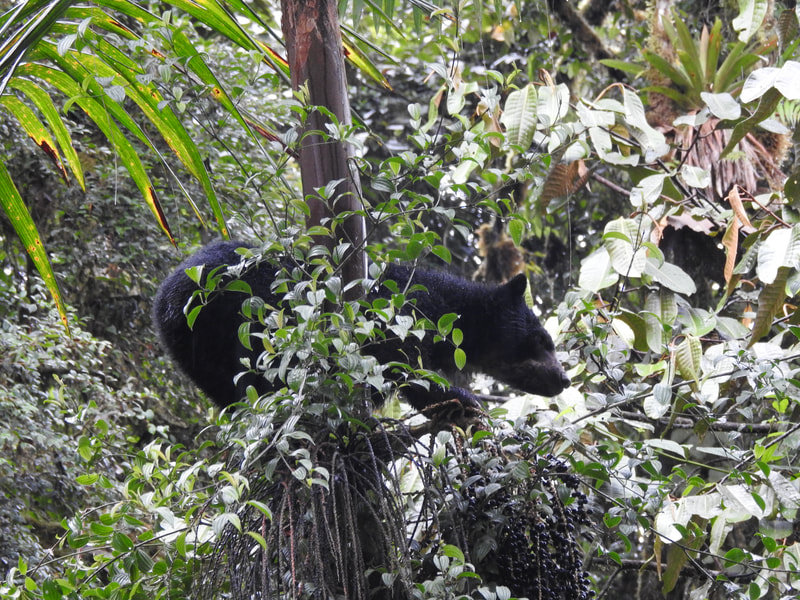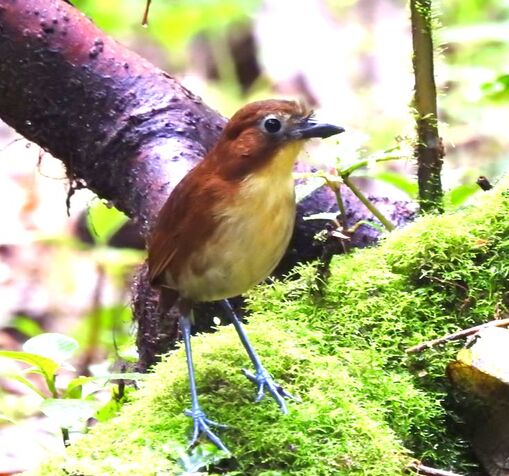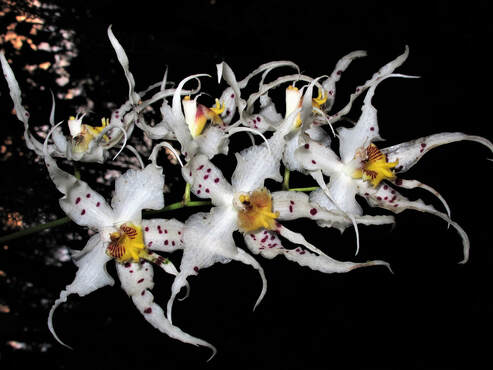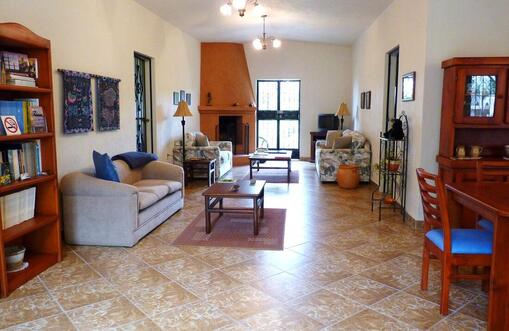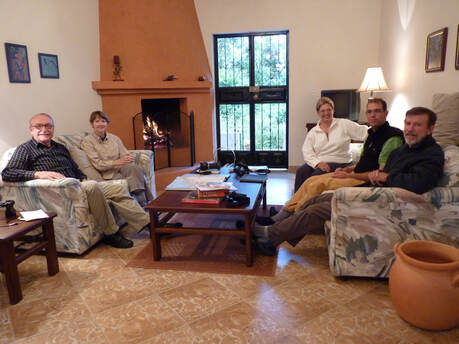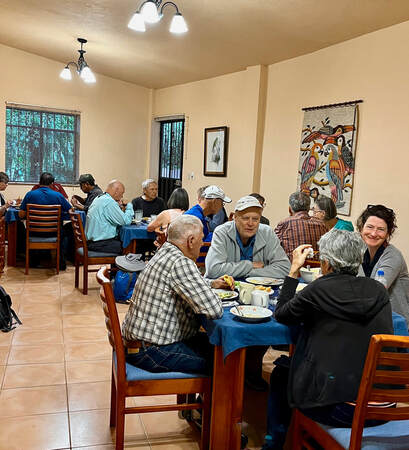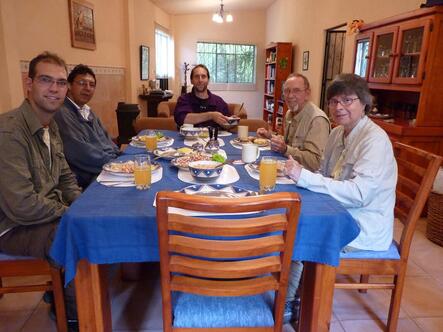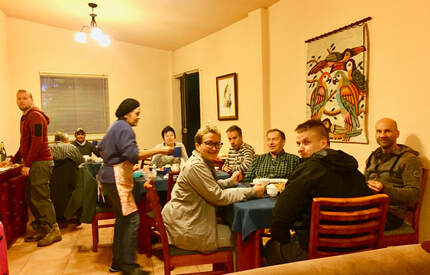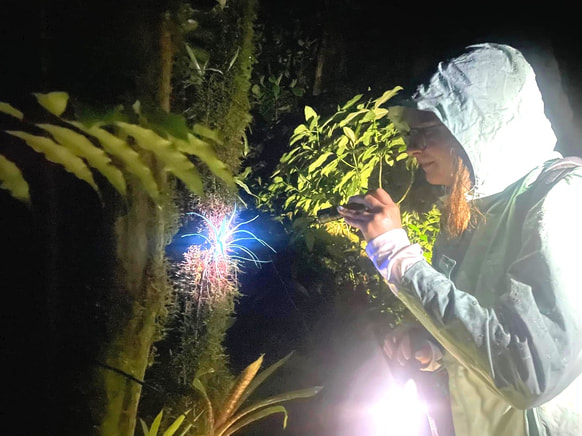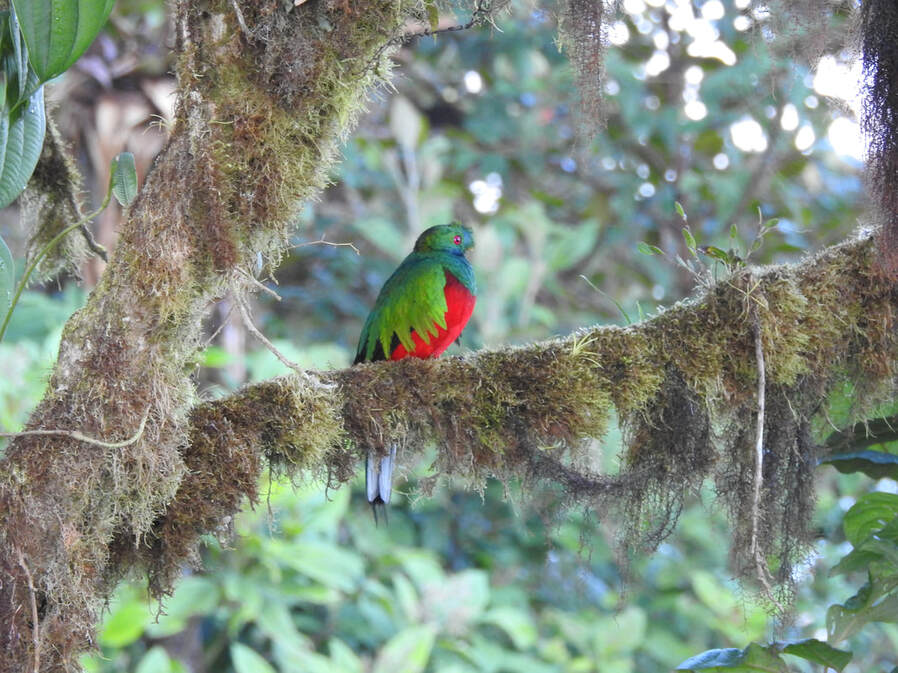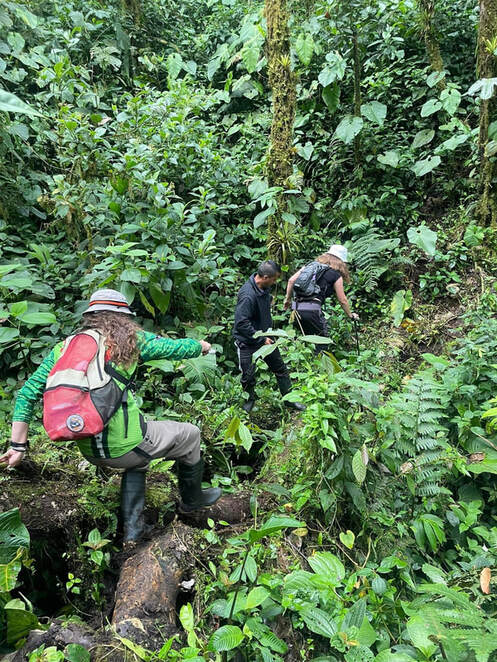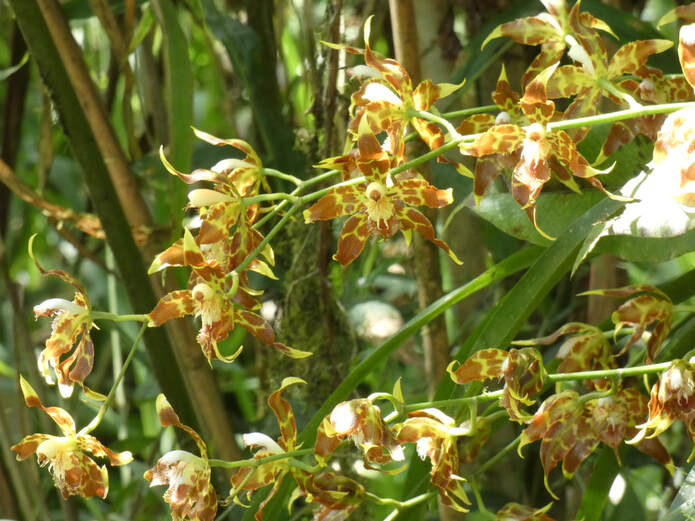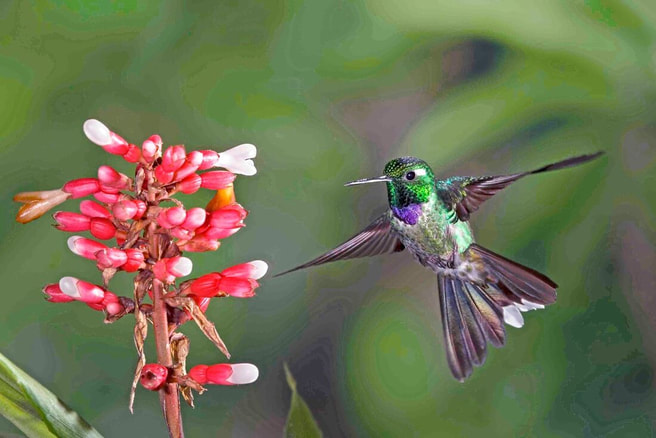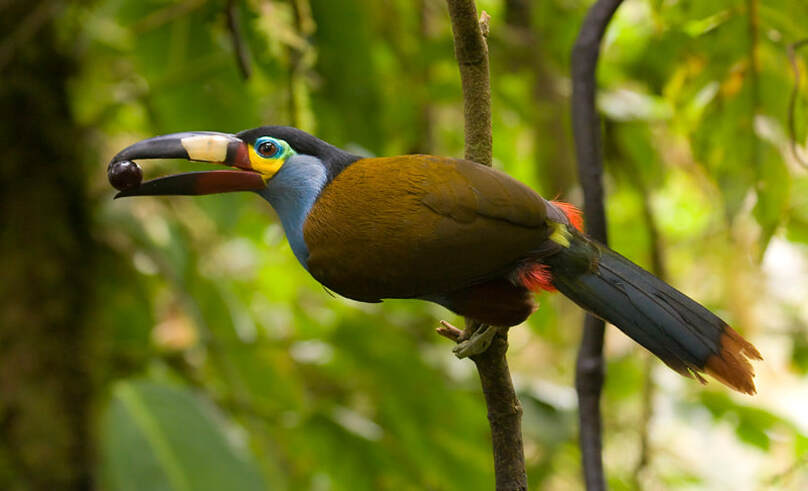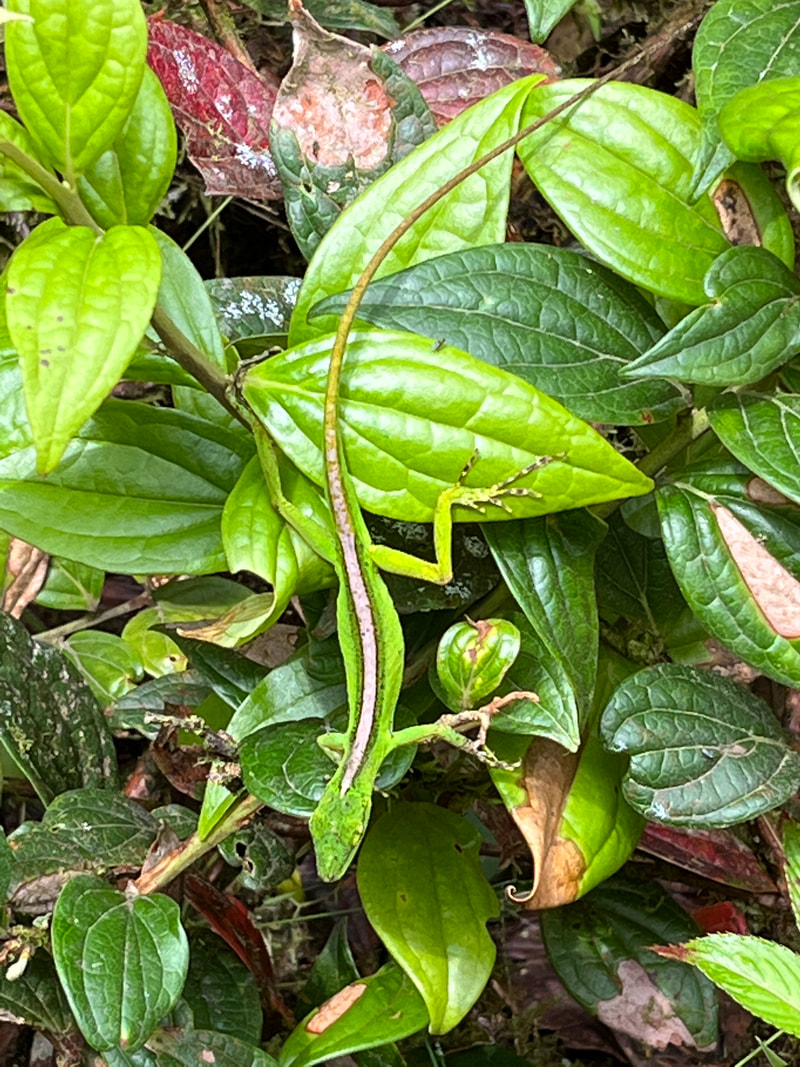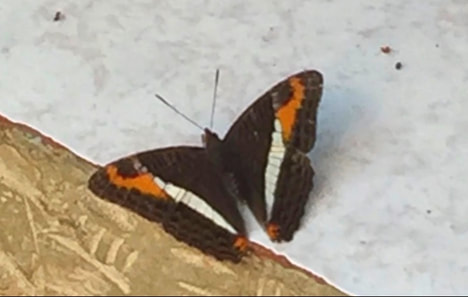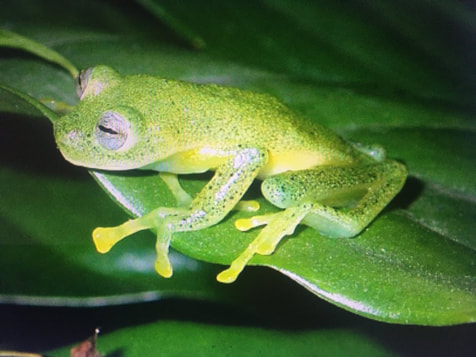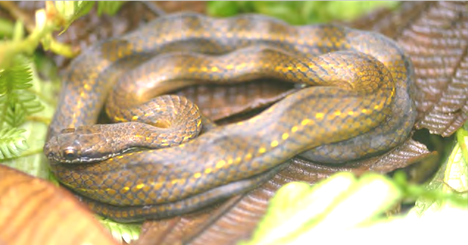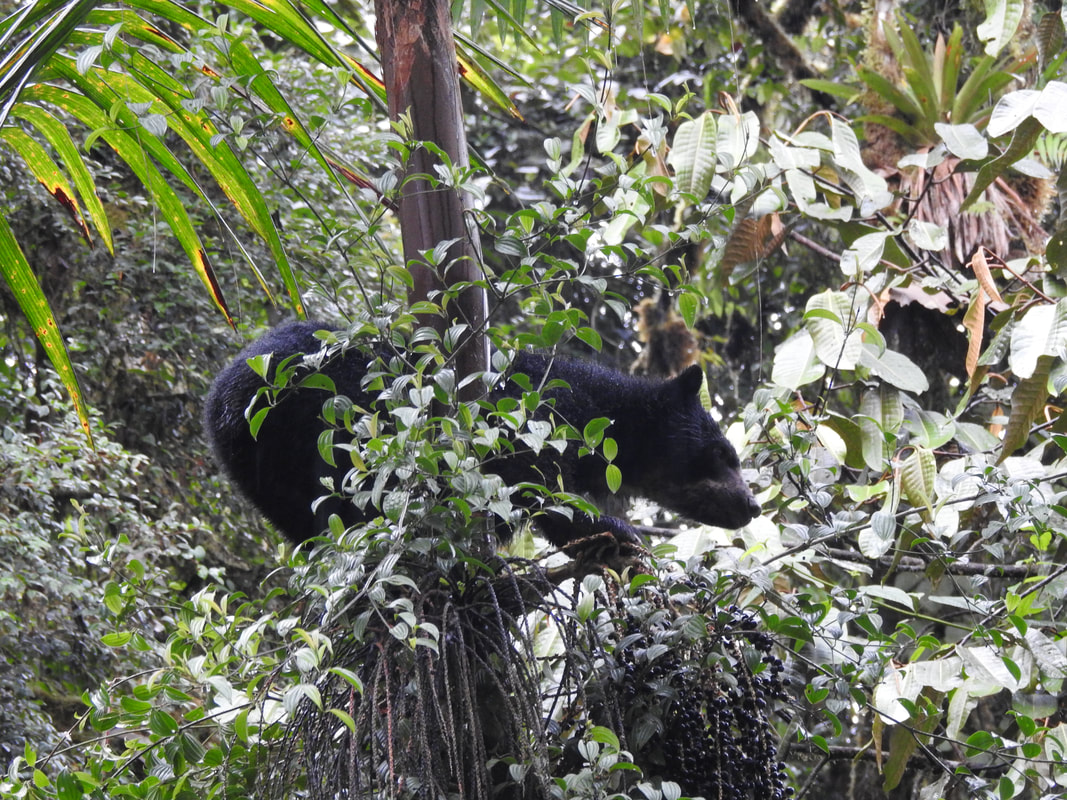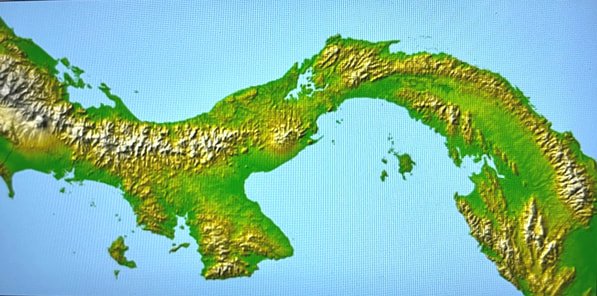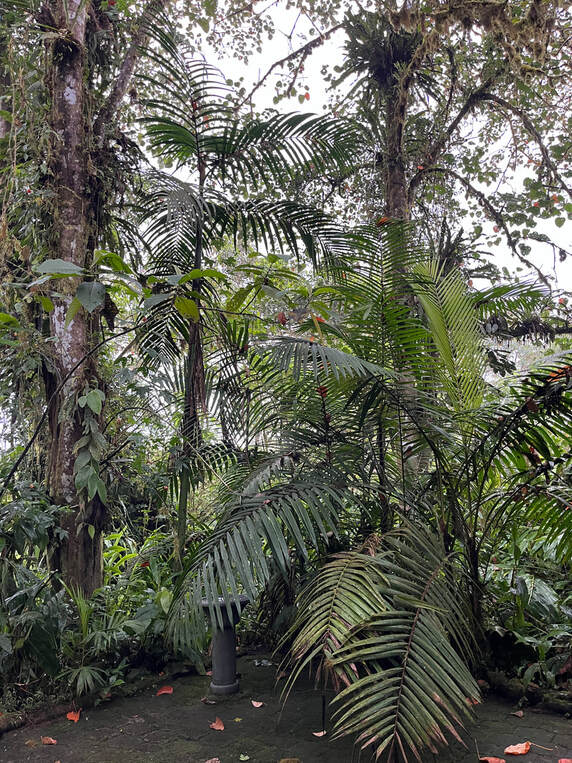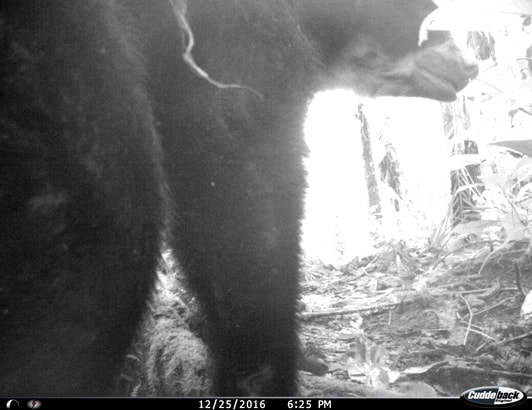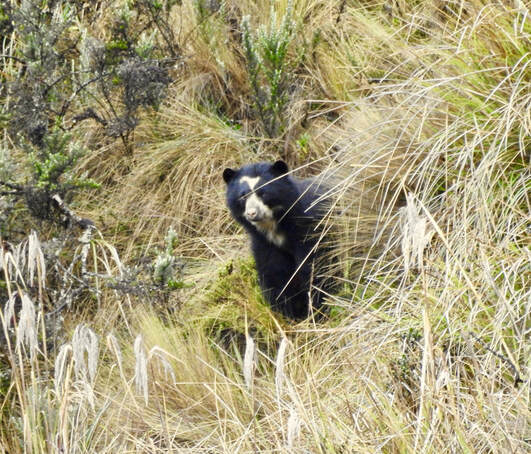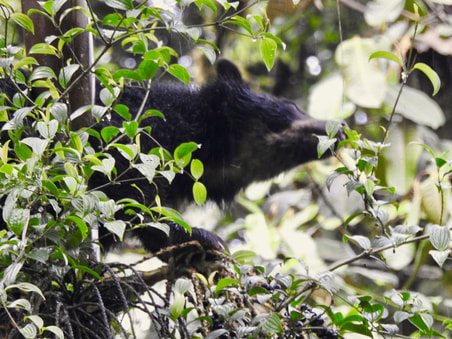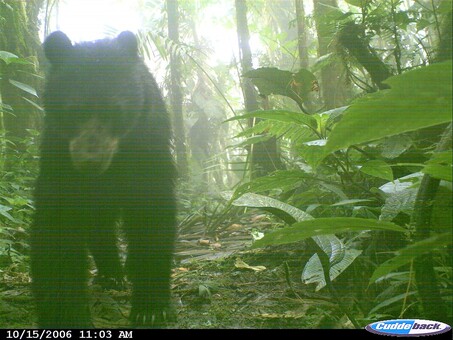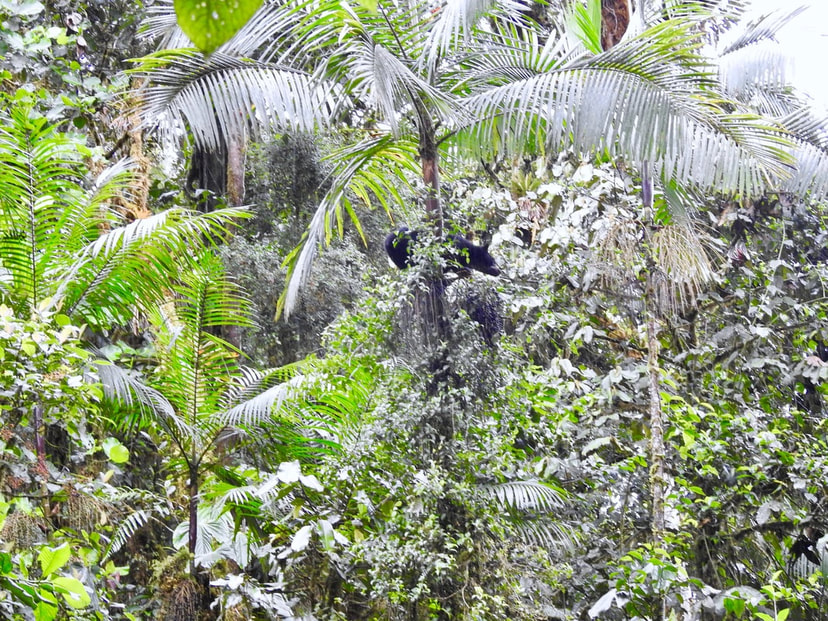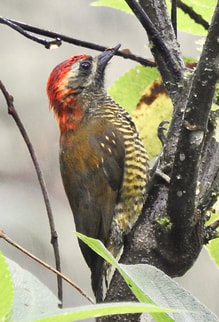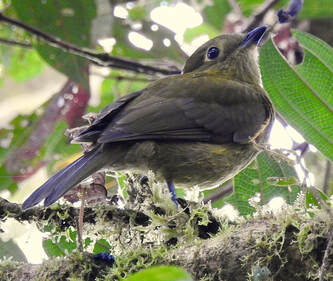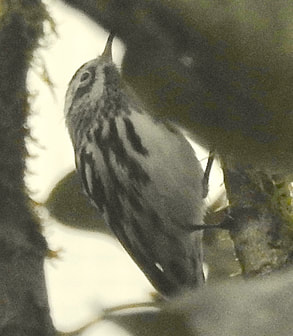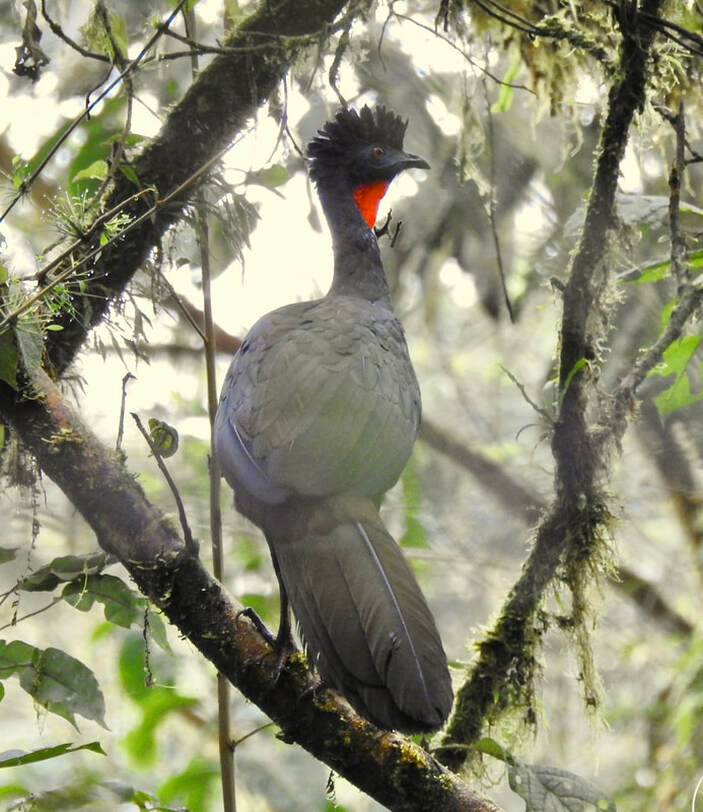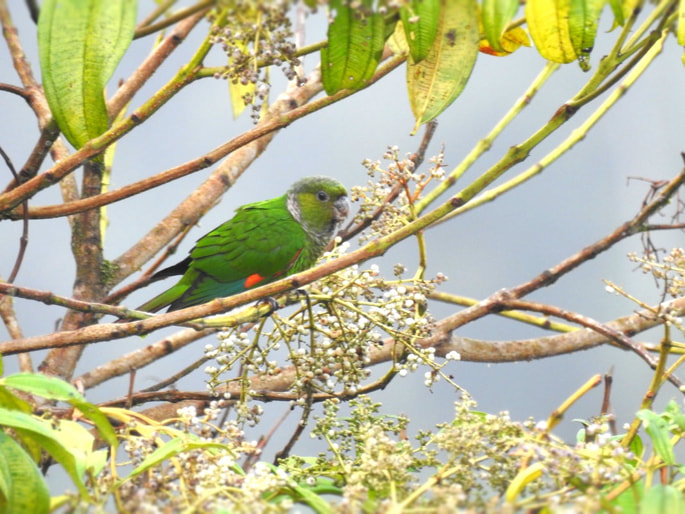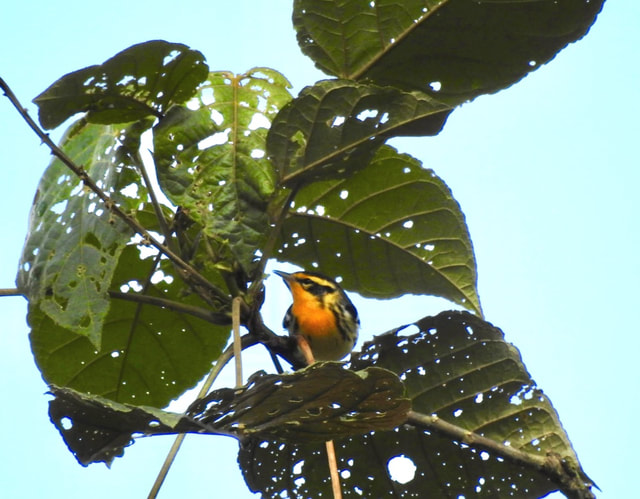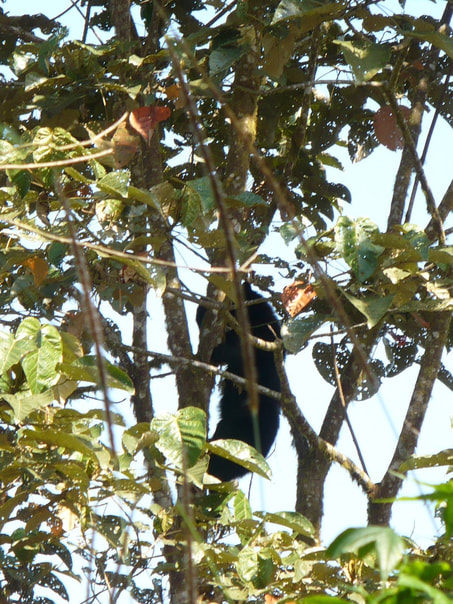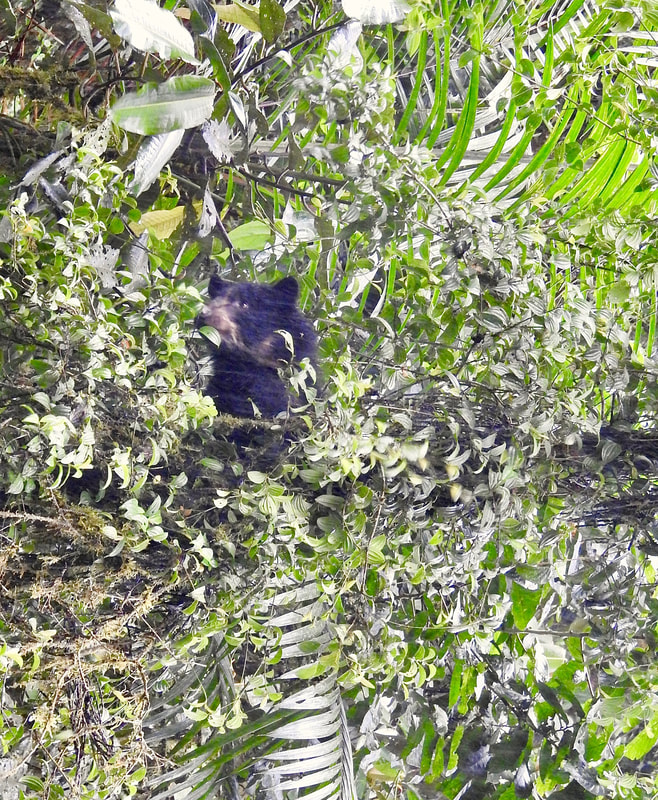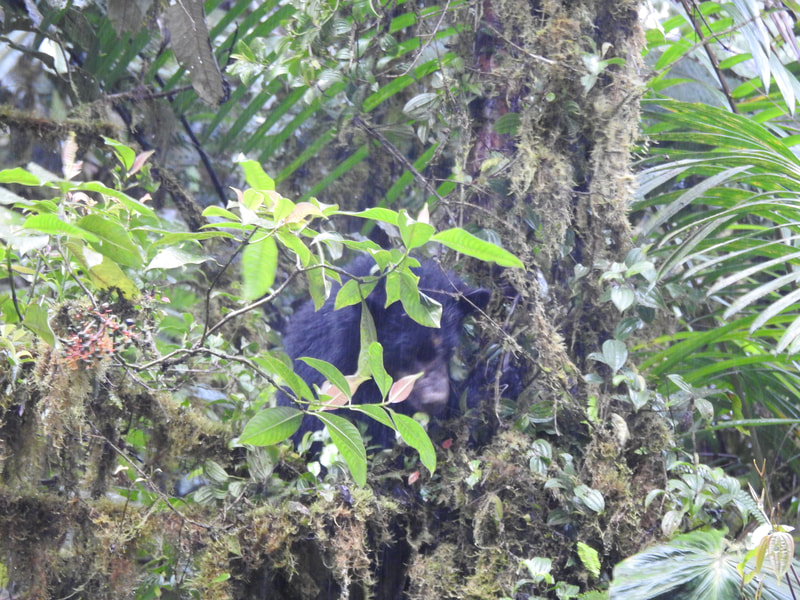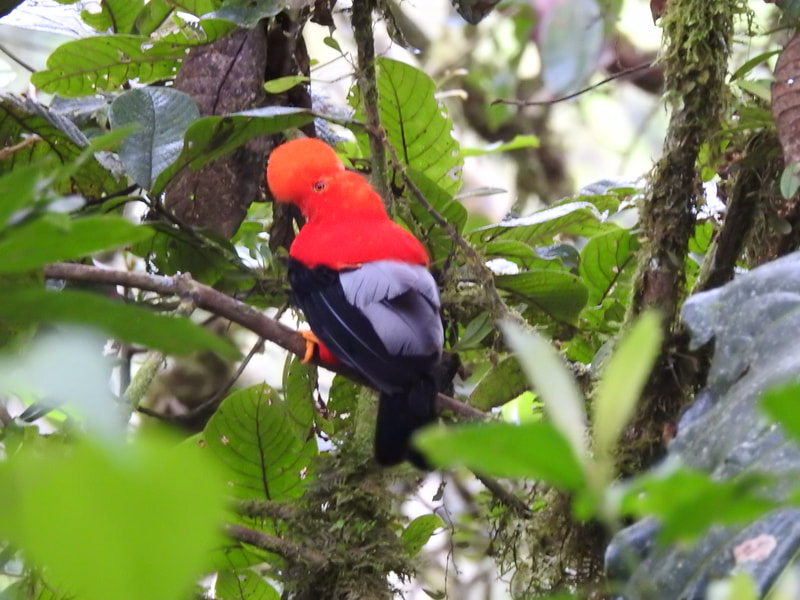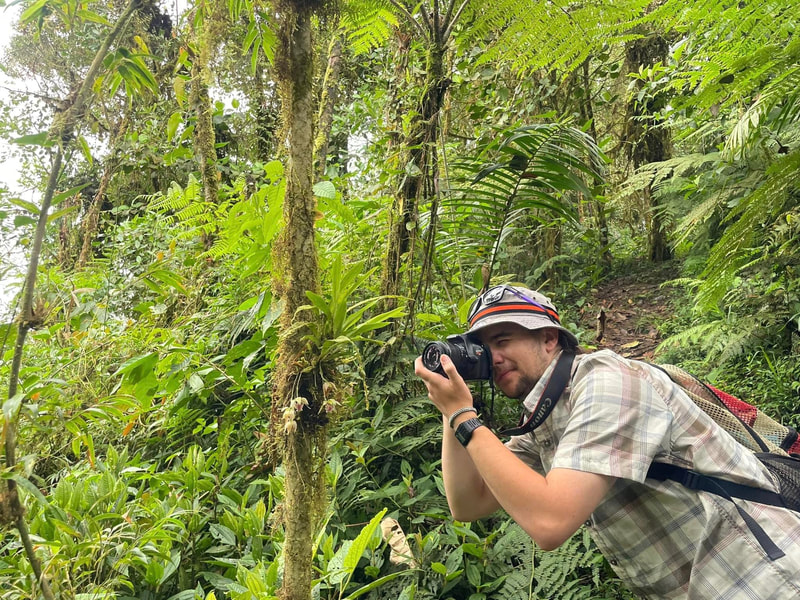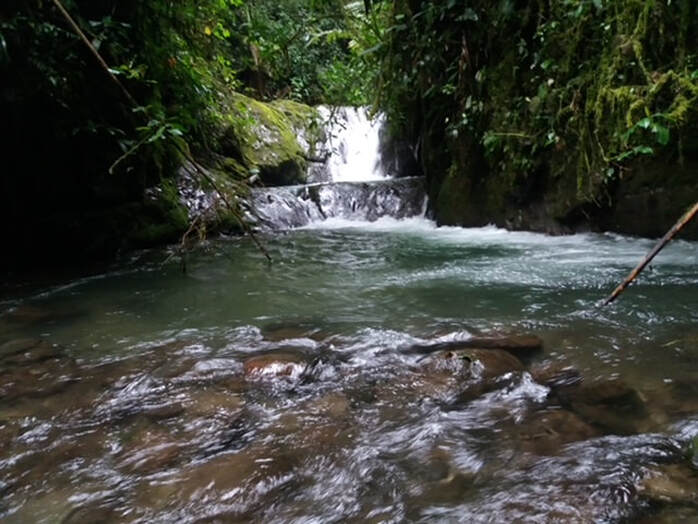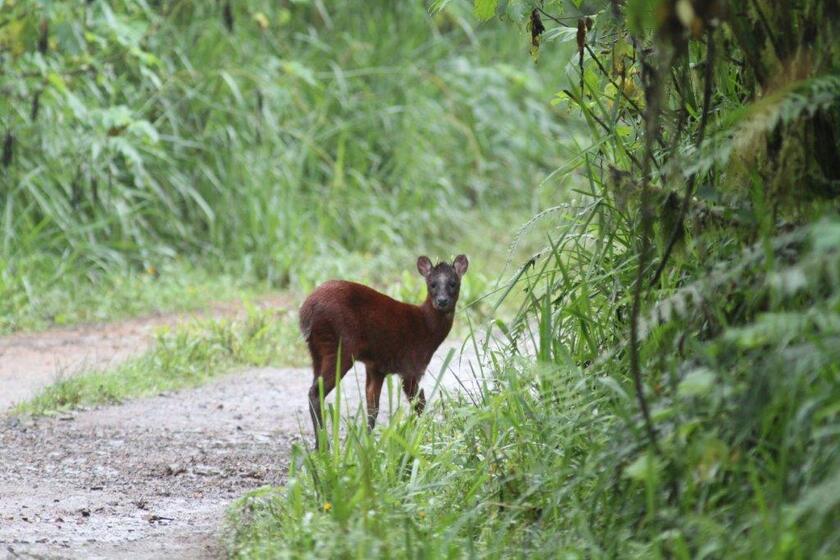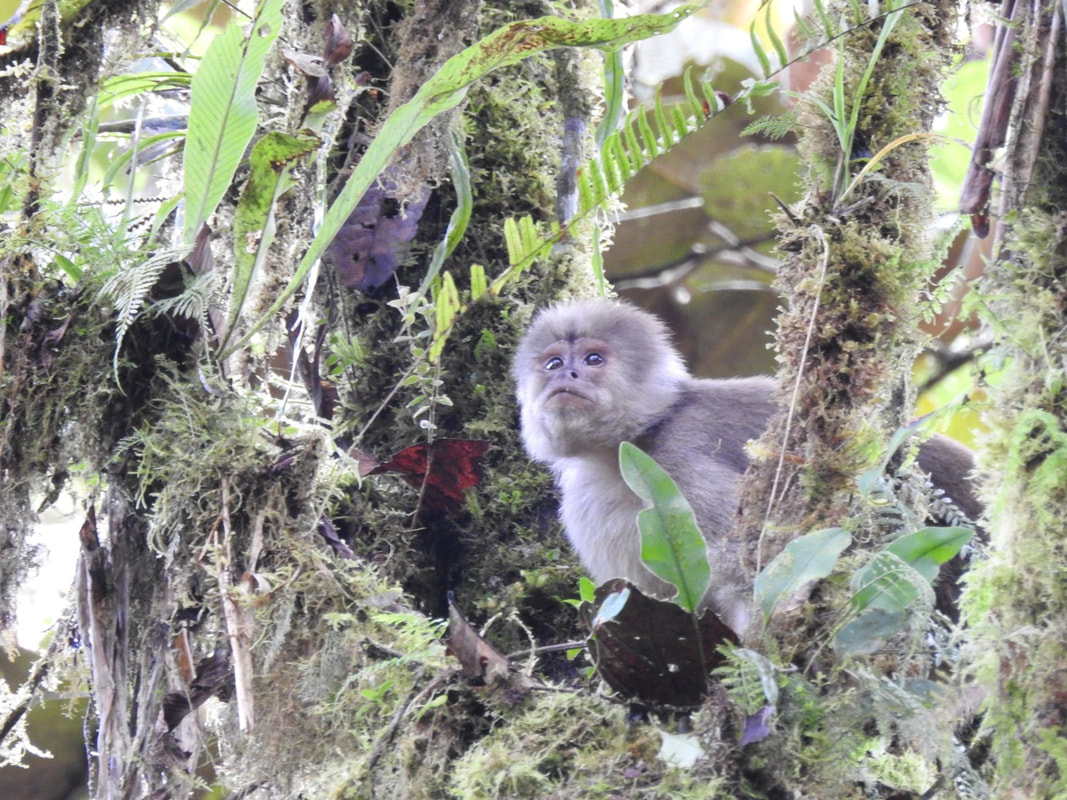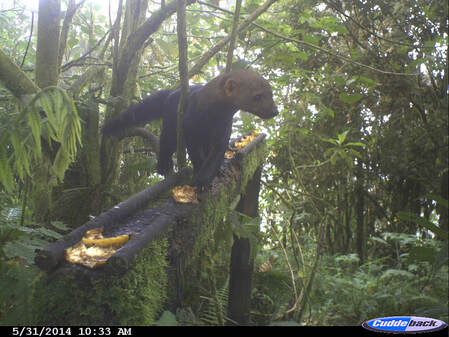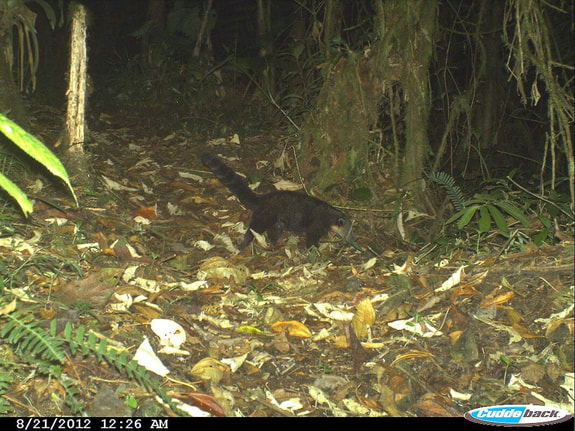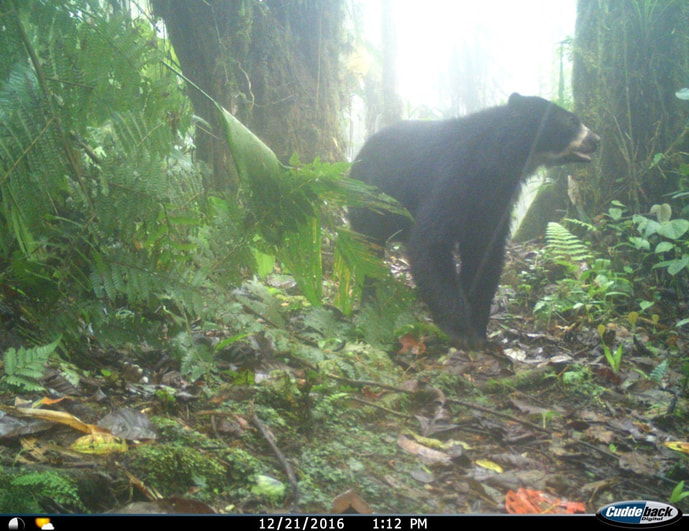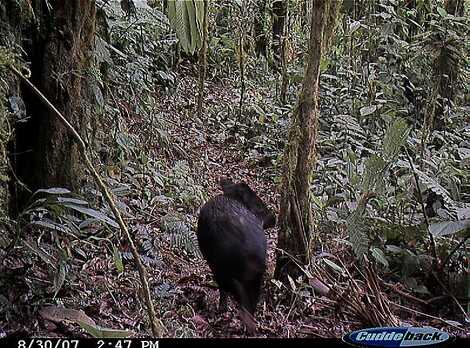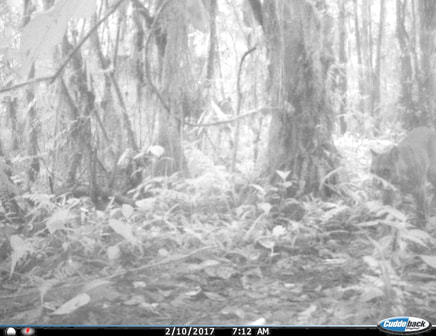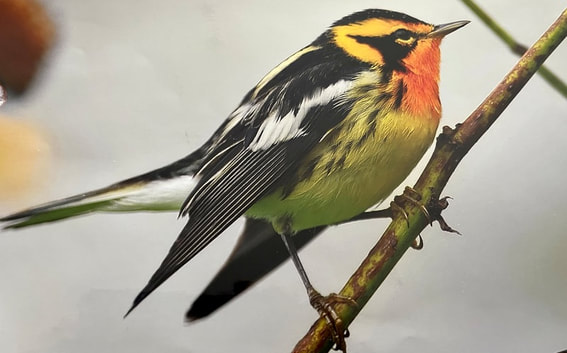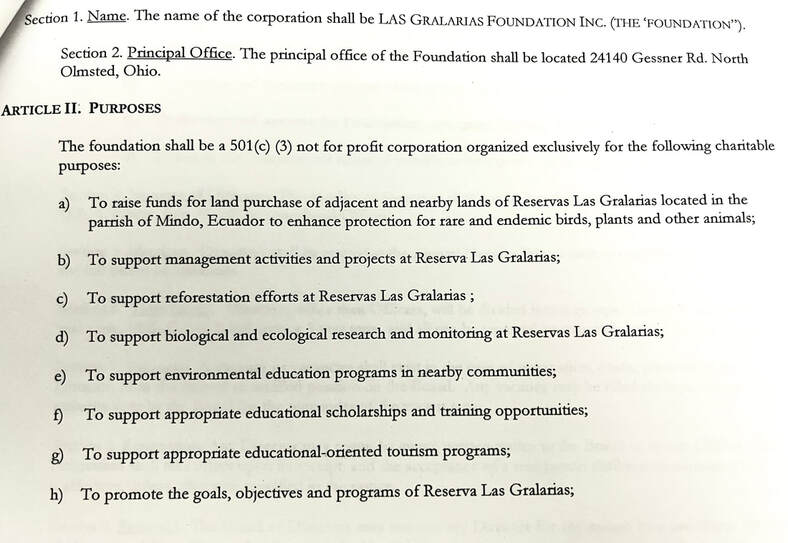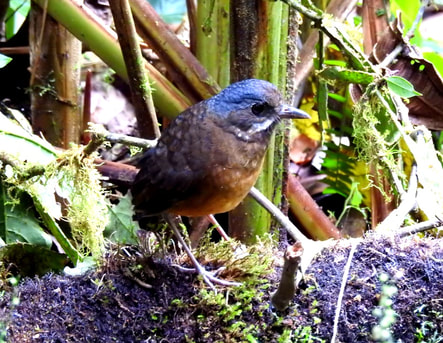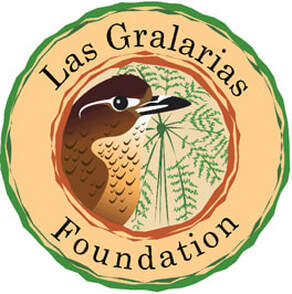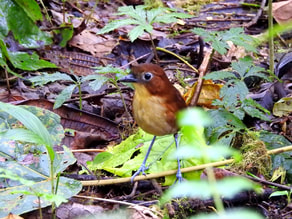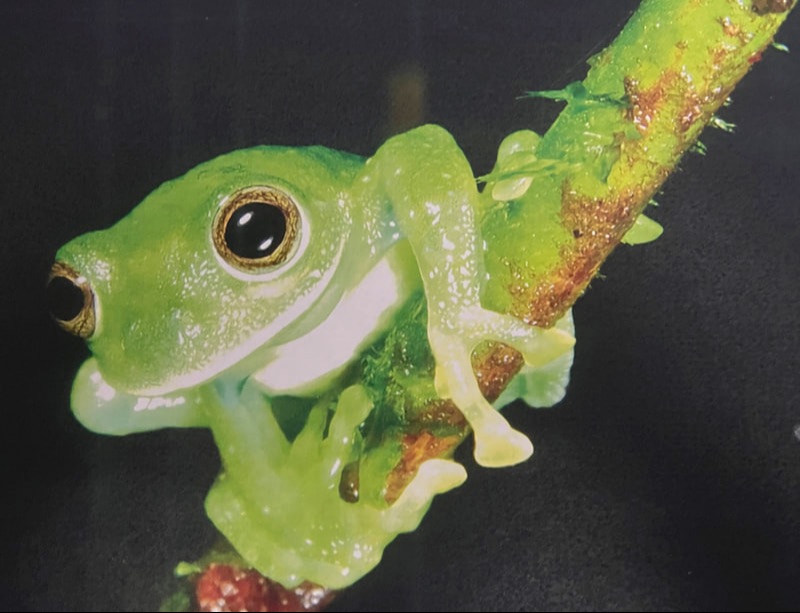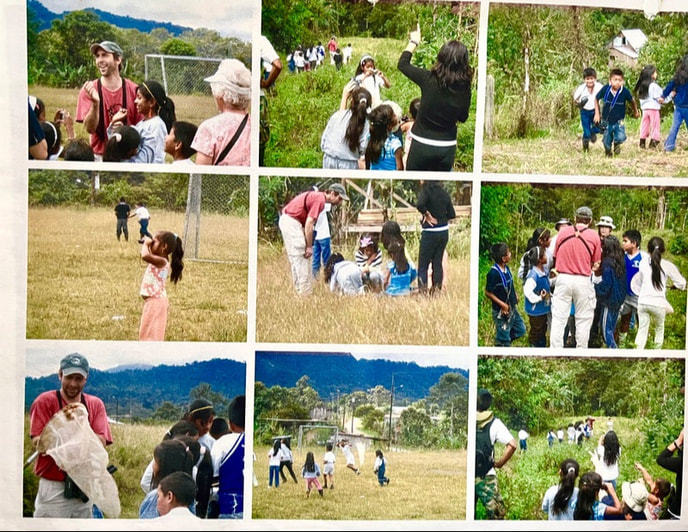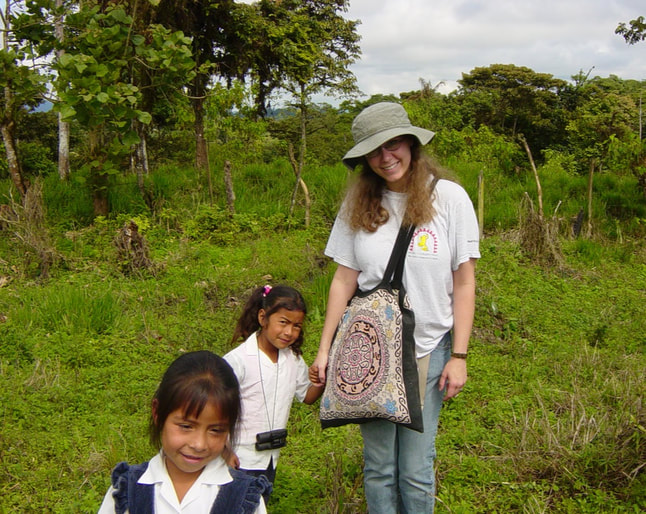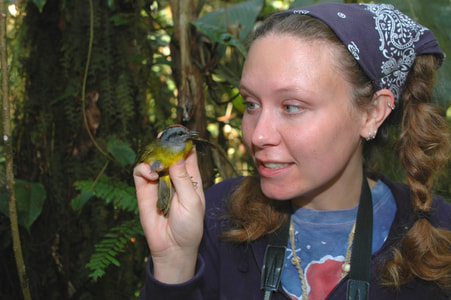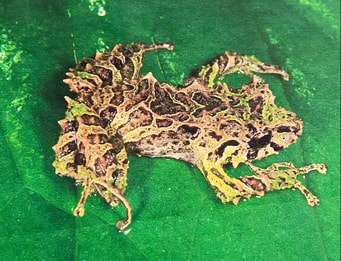PROJECTS
**In 2001 a preliminary vegetation survey was conducted by a team of botanists from Ecuador´s National Herbarium. Plant species targeted for collection were those species of plants considered to be of importance to birds or special for some other reason. Of the 82 species of 32 families collected, 11 species found are endemic to Ecuador, with 1 species considered critically endangered, 1 species endangered, 3 species considered near-threatened, and 5 species considered vulnerable. With this information we have been able to better plan our trail system in order to avoid disturbing rare species as well as to cultivate those species of plants and trees of particular significance to birds and to conservation in general. A copy of the plant survey (in Spanish only) is available for reading for anyone interested.
**In 2012 Peruvian botanist Wilson Ramirez found a tree species on the reserve that had been considered extinct.
**And in 2018 botanists studied hummingbird-plant interactions with some very interesting data collected so far. The project continued in 2019 both as a stand-alone research project and also as part of an individual’s PhD dissertation field research.
**Beginning in 2005 frog experts have conducted a series of surveys throughout the reserve. The results have been amazing: eleven species of endangered amphibians are now known to live at Las Gralarias, including 3 species of glass frog that are considered critically endangered and are currently known from only a few sites. In addition, some 6-7 species of frog that may be new to science have recently been found on the reserve.
**Thanks to a multi-year grant received in January 2012 from the "Save Our Species" program of the IUCN-World Bank-Global Environment Facility, researchers from the Universidad Tecnológica Indoamérica in Quito.
**In 2018 a new rain frog, Pristimantis gralarias, was formally described , and in the coming years we will be hosting university student researchers from University of California Berkeley, Ohio Northern University and the Universidad San Francisco de Quito.
**We have been fortunate over the years to have hosted writers and photographers from National Geographic magazine and the British Broadcasting Company (BBC), as well as authors, photographers, researchers, birders, tourists and volunteers from around the world, in fact, from 27 countries. We have received international grants for our efforts, and we deeply appreciate all of this help as well as the many individual donors, volunteers, friends, staff and our amazing Board of Directors and Publications Team for all the support they have provided for more than twenty years.
The continued goal of Reserva Las Gralarias is to conserve the natural habitat found within the reserve, to regenerate disturbed areas with native species, and to purchase additional adjacent properties to form habitat connections along the waterways and forests both upslope and downslope as possible. We support conservation-oriented field research as well as local environmental education projects.
We will be more than happy to talk with anyone interested in donating to this cause or who would like more information.
Donors can also contact the Las Gralarias Foundation, Inc., a U.S.A. 501(c)3 tax-exempt non-profit organization.
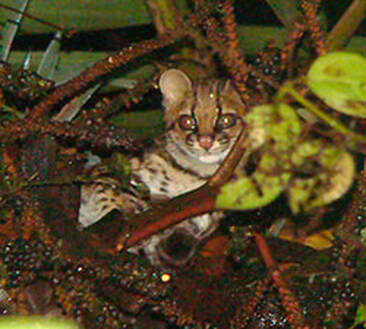
LAS GRALARIAS GUEST HOUSE
Las Gralarias Guest House is one of Ecuador´s finest birding and nature lodges. It is situated just south of the equator at an elevation of 6200 feet (2068 meters) and just two hours from the city of Quito. This small lodge is located in the middle of the famous birding site Reserva Las Gralarias and provides first-class comfort and service while serving as a model for conservation and restoration of the western Andean Chocó cloud forest habitat. Conveniently situated just 2 miles (3.5 kilometers) from the main highway, the lodge is easily accessible. It was designed for the comfort of our clients - in fact, you can drive right up to the front door.
The climate is very pleasant with comfortable temperatures (50-80°F/10-28°C). Often in the early mornings the sun rises from clear blue skies dominated by stunning views of the distant Pichincha Volcano and nearby bird-filled forested hills. By late afternoon spectacular formations of cumulus clouds may occur, and sometimes there are days with overcast. Generally there is only some rain in the afternoon, often followed by amazing celestial palettes of color as the sun sets over the western Andes. The main rainy season is normally short, from March to May. At this altitude and climate few bothersome insects are ever noticed, and tropical diseases have never been reported in this area.
From the lodge you have access to over 7 miles (12 kilometers) of birdy, uncrowded, well-marked trails. We maintain three feeding stations for hummingbirds and frugivorous species such as tanagers and toucans. More than half of all the bird species found in the wider Mindo-Tandayapa-Milpe area have been recorded at Reserva Las Gralarias. We currently have a bird checklist of close to 300 species many of which are endemic to the Chocó Biogeographic Region of the Andes West Slope, and 12 species are considered to be at risk (p.65-66, Birds of Ecuador).
Specialties of the reserve include: Wattled Guan, Crested Guan, Hoary Puffleg, Dark-backed Wood-Quail, Cloud-forest Pygmy-Owl, Golden-headed Quetzal, Crested Quetzal, Beautiful Jay, White-faced Nunbird, Plate-billed Mountain-Toucan, Giant Antpitta, Yellow-breasted Antpitta, Moustached Antpitta, Chestnut-crowned Antpitta, Ochre-breasted Antpitta, Scaled Fruiteater, Orange-breasted Fruiteater, Green-and-black Fruiteater, Club-winged Manakin, Golden-winged Manakin, Olivaceous Piha, Powerful Woodpecker, Crimson-mantled Woodpecker, Yellow-vented Woodpecker, 7 species of parrots, 15 species of ovenbirds, 27 species of tanagers, mountain-tanagers and flower-piercers, 25 species of flycatchers, 26 species of hummingbirds and much more!
Our goal is to provide top quality birding and nature enjoyment in a comfortable setting while conserving the habitat and its avifauna. We have sponsored local outreach environmental education programs, including a local birdwatching club for schoolchildren, as well as on-site research and are happy to hear from anyone interesting in volunteering to work at the reserve. The reserve encourages ongoing conservation-oriented biological research, not limited to avian fauna but including all aspects of tropical montane and cloud forest ecology.
We manage the reserve for the benefit of native flora and fauna and allow human visitors to enjoy the reserve in areas and ways that do not disturb the ecosystem. No trees were cut to build our buildings. Our constructions are 100% ecological, made with long-lasting non-toxic materials that require little maintenance. All buildings were constructed in previously pastured areas and the surrounding sites are now being replanted with bird-friendly plants and native trees. Our water system is rainfall, collected in roof-tubes and cisterns and filtered through a pumping system. Used water is collected in septic tanks and gray water is filtered through a drainage field.
Our human footprint at Las Gralarias is minimal and blends harmoniously
with our beautiful and tranquil surroundings.
This lodge and reserve cater to birds, birders and nature-enthusiasts!
So, if you want top class birding and nature hikes without the crowds,
this is the place for you!
We can provide transportation, complete accommodations and an on-site guide as well as
full birding tours in this area and anywhere else in Ecuador and South America.
Check out our group tours at http://www.mindobirdtours.com/
Advanced reservations only.
Contact us at: jalyons593@gmail.com
Individuals interested in volunteering at or donating to the reserve
are invited to contact us.
Donations are tax-deductible within the U.S.A. via the 501c3 non-profit
Las Gralarias Foundation, Inc. http://www.lasgralariasfoundation.org
